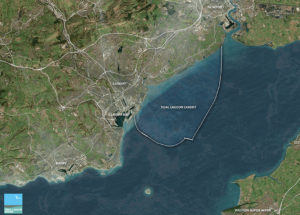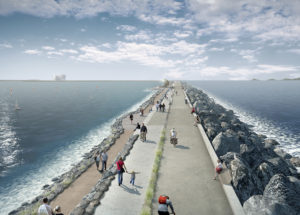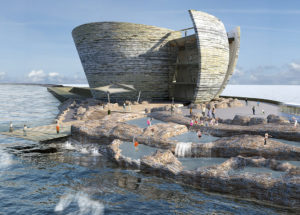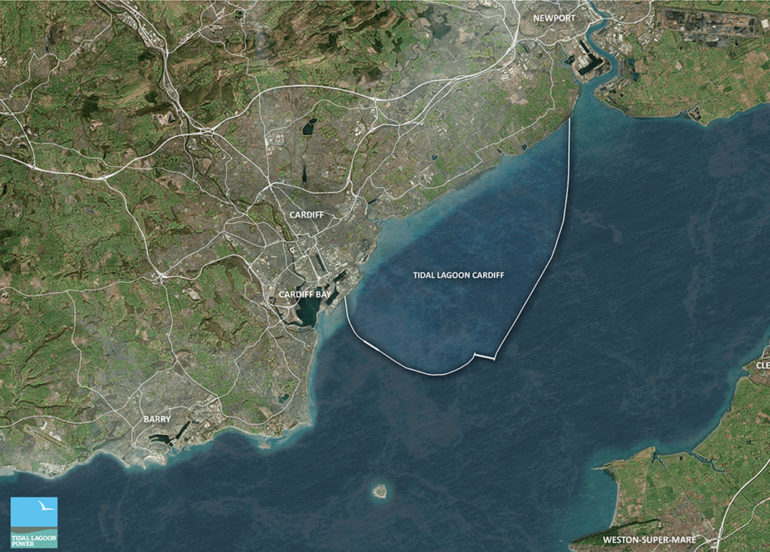
PLANS for an £8bn tidal lagoon in Cardiff Bay rest on the outcome of a UK Government review into whether such projects provide value for money.
Cardiff Council cabinet members yesterday (Nov 21) agreed to establish a “Scrutiny Task and Finish group” to work with the renewable energy-generating lagoon’s developers if the Government’s Hendry Review of Tidal Lagoons finds in favour of the project.
The proposed tidal lagoon is expected to cost £6-8 billion and would enclose an area of 70 sq km within an 18km sea wall stretching from 2km to the east of Cardiff Bay to 2km west of the River Usk’s mouth at Newport.

Coun Paul Mitchell, chairman of the council’s Environmental Scrutiny Committee said: “The council will not be funding the project. Our role is to weigh the benefits that are promised by the company against the consequences that the lagoon will have for Cardiff and the surrounding area, making sure that all aspects are covered.”
Some key issues Coun Mitchell highlighted were the affect the lagoon’s sea wall would have on tide patterns, wildlife on the coastline near Rumney and the need to dredge the lagoon basin of sediment from the Rhymney River.
Coun Ramesh Patel, cabinet member for transport, planning, and sustainability said: “This project is of international significance and could put us on the map worldwide.
“To make sure that it is done properly we need to enlist the help of experts in a variety of fields to consider issues about the ecological, social, and economic effects of the lagoon.”
The RSPB have encouraged a slow and considered approach to constructing the proposed lagoon, as the Newport Wetlands reserve which they help to run could be effected.
Kate-Jo Luxton, the director of RSPB Cymru said: “Tidal lagoons offer an opportunity to generate renewable energy from new sources, but as with any new technology we need to be cautious as we explore their potential and what threats it may pose for nature.
““Our recommendation would be for this scheme to wait until we have learned from the experience of the proposed tidal lagoon at Swansea, as a staggered approach would help us all to better understand the technology and how it impacts on both habitat and wildlife.”
According to developers Tidal Lagoon Power plc, the project would have a lifespan of 120 years and could generate enough power for every home in Wales when up and running.
It is expected to create 5,500 full-time jobs during construction and would sustain 1,000 jobs when operating.
Tidal Lagoon Swansea Bay promotional video from Preconstruct on Vimeo.
Tidal lagoons can generate energy at both low and high tide. At high tide water is let into the lagoon and generates electricity by turning a series of turbines.
At low tide, the process is reversed. Water is let back out of the lagoon, turning the turbines as it passes back into the sea.
Because there are two tide cycles in a day, the lagoon can generate power four times each day.
The Severn Estuary has one of the largest tidal range in the world, second only to the Bay of Fundy in North America, with the highest distance between low and high tide being 15m in some places.
The Hendry Review of Tidal Lagoons was established in February by the UK Government this year to find out if large-scale Tidal Lagoons would be good value for money.

Government worries about value for money first arose around the high cost of subsidies expected for Tidal Lagoon Power’s “pathfinder project”, the 11 sq km tidal lagoon in Swansea Bay, which originally had a strike price of more than £160 per kilowatt hour.
A strike price is a subsidy where the government guarantees to pay fixed-price to an energy company for creating electricity.
After negotiations between the government and Tidal Lagoon Power, the strike price for the Swansea Lagoon fell to £96.50, but a review was commissioned to investigate if the costs of larger lagoons like the one planned for Cardiff would be worth the subsidy.
If the review reports that tidal lagoons would play a part in the future of UK energy, Tidal Lagoon Power hopes to construct other large scale lagoons in Newport, Colwyn Bay, Cumbria, and Bridgwater Bay in Somerset, as well as Cardiff.
The Hendry Review is due to be published at the end of this month.

A map showing the extent of the proposed Cardiff Tidal Lagoon


